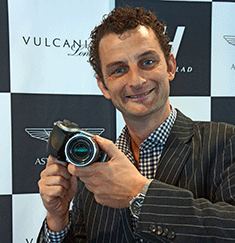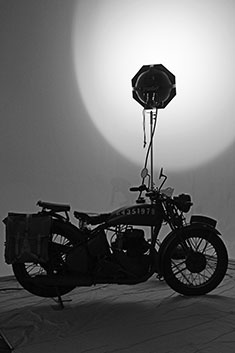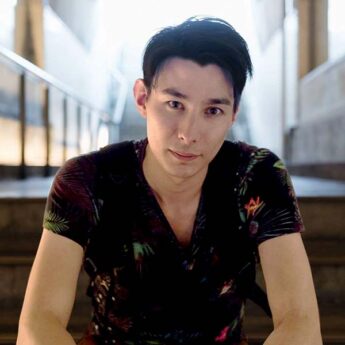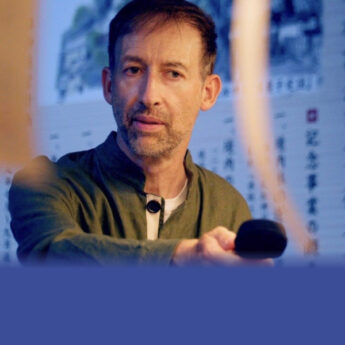How Hasselblad and its British president in Japan are changing the camera industry

Hasselblad Japan President William Penrice
Shortly after moving to Tokyo nearly three years ago, William Penrice, president of Hasselblad Japan, decided the best course for his firm was to start afresh and offer consumers an open door to come and “get their hands on” a Hasselblad.
“We had worked through a distributor, so we needed to reactivate and reconnect with the market. The previous way of doing business was selling boxes rather than selling the dream.
The Japanese are renowned for their appreciation of craftsmanship and quality, so setting up our office in situ within the market was an opportunity to stamp our own mark here”, Penrice said.
A Cumbrian native, Penrice first picked up a camera when he was 10 years old, and has always taken a lot of photos. His first visit to Japan came 24 years ago, when he was an exchange student in Fukuoka.
After obtaining a degree in East Asian politics and Japanese, he received a scholarship from the Daiwa Anglo–Japanese Foundation to study Japanese environmental policy. This was an interesting time, he said, as photography was an important medium to capture the extravagances of the day.
Before joining Hasselblad in the UK three-and-a-half years ago, he had worked for a Japanese manufacturer of photo processing equipment for 12 years, in both Wakayama and London.
“I went from printing to capturing pictures—it’s come full circle”, he said.
Penrice explained how photography was invented in the UK and France at about the same time and, at least in the early days, it was a European pursuit. Things have changed significantly, however, over the past five years or so.
When Hasselblad offered him the opportunity to build the firm’s Asia–Pacific business, he gladly accepted. After extensive transcontinental travels—Hasselblad is headquartered in Sweden—he decided it made sense to be based in Japan. Plus, Hasselblad was the only camera maker without a physical presence here.
“Tokyo is the centre of the camera industry, both in terms of manufacturing and photo culture. Japan was also our most challenging market in the whole region”, he said.

Hasselblad partnered with bike maker Norton to photograph their brand.
In Europe, he explained, three to four years ago, the majority of people purchasing high-end equipment were 30–40 years old, and about 30% of buyers were women. In Japan, the buyers were 60- to 80-year-olds and 100% were men. The demographic was completely opposite.
“What we’ve focused on, and succeeded in doing, is to build a photographic community that is, in many ways, interdependent, which helps us better understand the customer. We still serve the more mature customers, who come in for camera repairs but we’ve also seen a lot of growth in younger users of our cameras.”
Tokyo’s Harajuku district was chosen as the location for the Hasselblad Japan Gallery and the firm’s offices.
“We chose Harajuku so we could keep our finger on the pulse. The young people around here are just the demographic we were looking for, the creatives who are shaping the future of Japan”, he said.
Penrice went on to discuss a television programme he had seen about “the shaping of modern Britain”. The movers and shakers described in such narratives always include at least a few photographers, he added, as photography is always in the mix of where things are going. “To be with these people in our brand is just where we want to be”.
What he and his modest team here set out to do was to completely transform the business strategy, as the “salaryman model, of selling to lawyers and dentists, wasn’t working”.
“We weren’t engaging photographers. We needed to recognise that the photographer is king. So now we encourage and support them in any way we can, from loaning out equipment to hosting education workshops and helping artists launch their careers”, he said.
Penrice has brought in UK photographers, such as Tim Flach, to inspire enthusiasts in the broader picture of the photography business.
“Hasselblad is like a club. If people buy into the Hasselblad world, go to London or New York and need equipment or contacts, we can help them. For instance, we had a photographer named Lola who was coming to Kyushu and wanted to shoot volcanoes. She needed logistical help, and we gave it to her”, he said.
Interestingly enough, the members of the “Hasselblad club” do not necessarily own a Hasselblad camera. So how does this community-based philosophy translate into tangible financial gains?
“One day, that photographer might come back and buy a Hasselblad. Meanwhile, many of those we help have their work on TV or in other media, which carries our name”, Penrice added.
Cross-promotion is another cornerstone of building the brand. Hasselblad is now Aston Martin’s official imaging partner, and their cameras are sold in the iconic automaker’s showrooms. The Hasselblad logo also appears on the Aston Martin racing team apparel and other paraphernalia.
Cars, motorcycles and cameras have always been bedfellows, Penrice noted. When Norton brought their bikes to Japan in 2013, the Hasselblad team took some pictures for the brand and had several bikes parked in its Harajuku gallery for three weeks. Penrice invited Norton to launch the bikes at his gallery, with 100 or so journalists attending from Japan.
“We got our brand in the motorcycle press and got Norton in the photographic press—win/win”, he said. “Being a foreign brand and a small, flexible team we can do things others cannot”.
He described how brands like Norton and Aston Martin are just the kind of association he wants, as they are iconic marques, with a cult following of enthusiasts. “There is logic to the madness”.
Part of the reason behind this creative approach is a lack of a marketing budget. “When you’re in the start-up phase like we are, when there are so few people and resources, you’ve only got those around you”, Penrice said.
“I once took a course called Marketing without the Millions; that might just be one of the most useful things I learned”.





